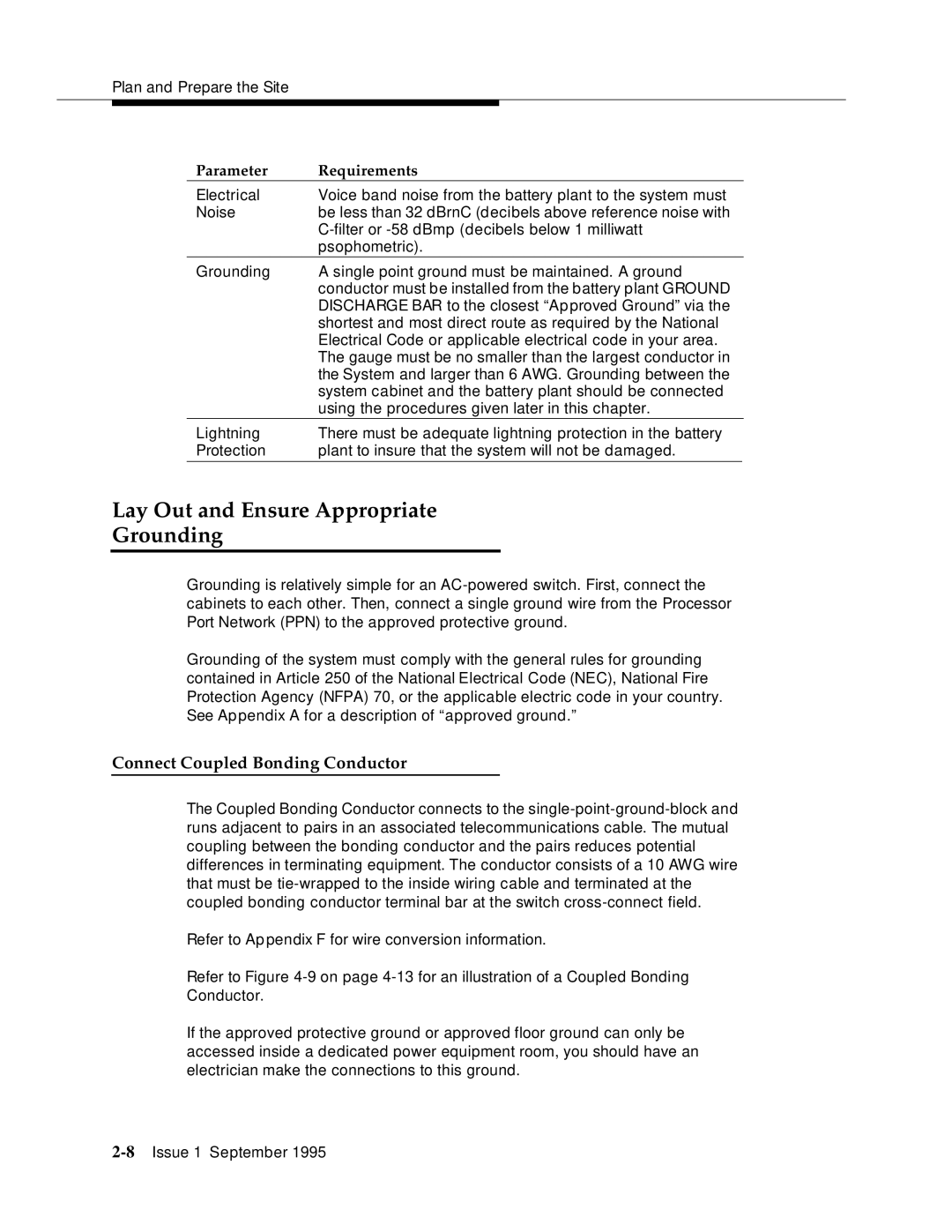
Plan and Prepare the Site
Parameter | Requirements |
Electrical | Voice band noise from the battery plant to the system must |
Noise | be less than 32 dBrnC (decibels above reference noise with |
| |
| psophometric). |
Grounding | A single point ground must be maintained. A ground |
| conductor must be installed from the battery plant GROUND |
| DISCHARGE BAR to the closest “Approved Ground” via the |
| shortest and most direct route as required by the National |
| Electrical Code or applicable electrical code in your area. |
| The gauge must be no smaller than the largest conductor in |
| the System and larger than 6 AWG. Grounding between the |
| system cabinet and the battery plant should be connected |
| using the procedures given later in this chapter. |
Lightning | There must be adequate lightning protection in the battery |
Protection | plant to insure that the system will not be damaged. |
Lay Out and Ensure Appropriate
Grounding
Grounding is relatively simple for an
Grounding of the system must comply with the general rules for grounding contained in Article 250 of the National Electrical Code (NEC), National Fire Protection Agency (NFPA) 70, or the applicable electric code in your country. See Appendix A for a description of “approved ground.”
Connect Coupled Bonding Conductor
The Coupled Bonding Conductor connects to the
Refer to Appendix F for wire conversion information.
Refer to Figure
If the approved protective ground or approved floor ground can only be accessed inside a dedicated power equipment room, you should have an electrician make the connections to this ground.
